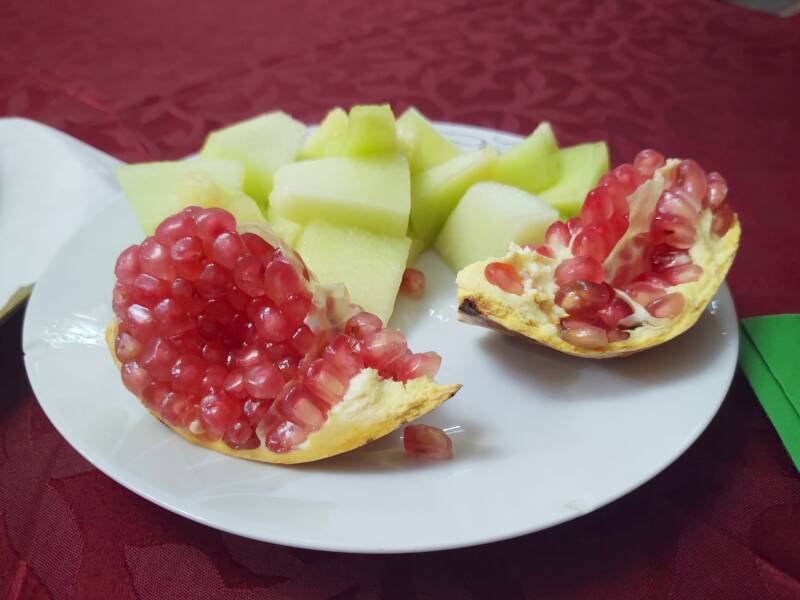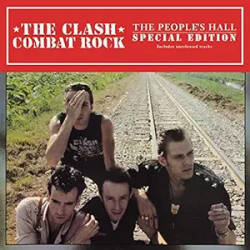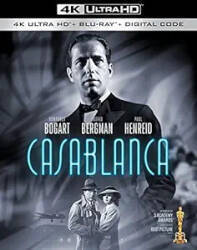
Art Deco Casablanca
Art Deco in Casablanca
The gigantic Hassan II Mosque is usually cited as
the most prominent tourist attraction in Casablanca.
If you have to answer with a single location, sure.
And, for many foreign visitors,
it is very likely the first and possibly the only mosque
they will see.
But I've been to lots of mosques throughout
Turkey,
in
Damascus
and
Aleppo,
and in
Cairo.
Casablanca's Hassan II Mosque is impressive, but...
To me, the interesting thing to see in Casablanca was the
Art Deco architecture
all through the center of the city.
It's there because France controlled Morocco during the period
when Art Deco, a French invention, was the dominant design style.
There was a lot to see within walking distance of my hotel.
Below is the entryway of the Hotel Moroccan House
where I was staying.
No, I don't know why my innkeeper was lurking behind
the potted plants.
Or, why they have a metal detector.
I had just arrived in Morocco the previous evening,
and I was still working on figuring out the basics.
I walked two blocks south to Boulevard Mohammad V,
with the tram line running down its center,
and turned right, to the west.
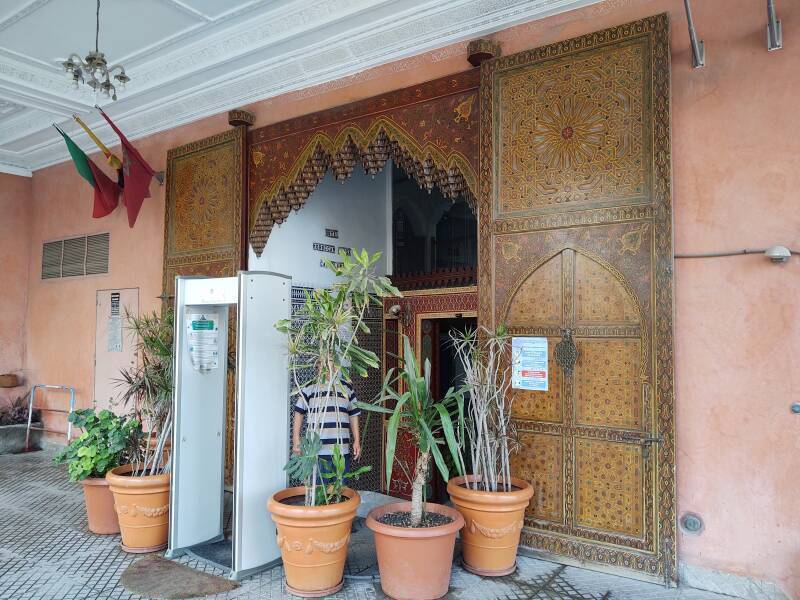
Cycles of Colonialism Leading to the French Protectorate
The history of Morocco is long and complicated, even if you limit your attention just to when the western European nations got involved.
There was Moulay Idris el Akhbar, a great-grandson of the Prophet Muhammed, who fled to Morocco to escape persecution and death. He founded a dynasty and began building Fez. But then the Caliph in Baghdad sent an assassin who poisoned him in 791.
The Moroccan sultan Abu Inan Faris had deposed his father Abu al-Hasan in 1348 before trying to reconquer Algeria and Tunisia. But then he was strangled by his own vizier in 1358.
Moulay Ismail Ibn Sharif, who ruled for 55 years and fathered over 1,000 children, used the mail to try to convert James II of England to Islam and to marry an illegitimate daughter of French king Louis XIV.
Tangier in the far north had been under European control off and on, largely under Spain and Portugal. The Portuguese gave Tangier to King Charles II of England as a dowry when he married Catherine of Braganza in 1662.
The current Alouite dynasty took power in Morocco soon after that, in 1666. They claim descent through Muhammad through his daughter Fāṭimah az-Zahrā and his paternal cousin 'Alī ibn Abī Ṭālib. This makes them a sharifian dynasty, as a sharīf is someone claiming descent from Muhammad. In that song from 1982's Combat Rock by The Clash, the Sharīf who doesn't like the music is in a position of authority given his heritage.
Ismail ibn Sharīf didn't have the support of any Berber or Bedouin tribes, so he controlled with an army of slaves from further south in Africa. He reoccupied Tangier in 1684 after the English abandoned it.
After the Napoleonic Wars of 1803–1815, European powers were more active through the Mediterranean and the Ottoman Empire was declining. The North African coast was the home of pirates operating under local beyler, with bey being the Turkish word for chieftain and beyler being several of those. That provided an excuse for European intrusion.
France began taking control of territory in Algeria in 1830. In 1840 the Franco-Moroccan War saw French naval bombardment of Tangier and other battles.
In 1856 Morrocan Sultan Abd al-Rahman signed the Anglo-Moroccan Treaty, granting several rights to British subjects in Morocco and adjusting Moroccan customs tariffs.
Then Spain got involved, with the Hispano-Moroccan War of 1859–1860, ending with a treaty that led the Moroccan government to take out a loan from Britain that was larger than the Morccan national reserves.
Through the end of the 1800s European countries were making investments in Morocco, taking actions that made Morocco more instable, and then intervening with demands of economic concessions to protect those investments. Ah, the great cycle of colonial economics. More than half of the Moroccan government's expenditures were going to European countries to pay war reparations and to buy weapons, other military equipment, and manufactured goods.
Abd al-Aziz was Sultan 1894–1908, becoming Sultan when he was just 16. His attempts to straighten out the financial mess led to a revolution that deposed him in 1908 and replaced him with his brother.
Meanwhile, starting in 1905, Kaiser Wilhelm II of Germany chose Tangier as the location for some provocations of France and Britain that were major steps toward the First World War.
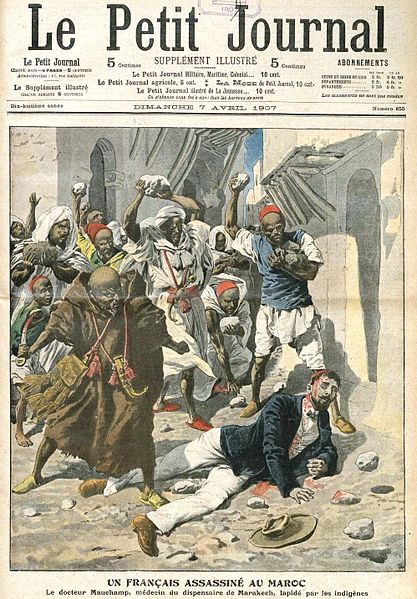
Le Petit Journal 7 April 1907 showing the assassination of Dr Mauchamp in Marrakech, from Wikipedia.
Then, in 1907, France had taken the murder of a French physician in Marrakech as an excuse to invade Morocco. A French newspaper had described it as "an unprovoked and indefensible attack from the barbarous natives of Morocco."
In 1911, a German gunboat stirred up more Moroccan provocations with France and Britain.
France and Spain set up a treaty between themselves in 1912, dividing up their control of all of Morocco. Spain's protectorate was a strip along the northern coast of Morocco plus a strip in the south bordering what was already Spanish Sahara. The French protectorate was the bulk of Morocco, between those north and south border strips.
The various treaties nominally assured Morocco of a status as a sovereign state with the Sultan as figurehead leader. But the Sultan had no real power and Morocco was ruled by the colonial administration. Meanwhile, France had Moroccan phosphate to mine, and railways to construct to move that phosphate to ports for shipment to France.
France was partially occupied by Nazi Germany during World War II. Roughly the northern and western two-thirds of France was under German occupation, including all the Atlantic and northern coastline. The remainder of France plus its colonies and protectorates were under the Vichy regime, which collaborated with Nazi Germany.
This was the period depicted in the movie Casablanca. It was filmed in mid-1942 and released in November 1942, just a few weeks after Operation Torch, the Allied invasion of Vichy-controlled Morocco and Algeria. The French Protectorate remained, but all French colonies and protectorates in North Africa were under the control of Free France by the end of November 1942.
In 1956 Morocco finally became independent from France and Spain, as described on the previous page about my arrival in Casablanca. France maintained its influence in the country, having a say in Morocco's foreign policy, stationing French troops there, and at least for a while, French settlers maintained their property and rights.
Art Deco Architecture in Casablanca
Art Nouveau was a style of art, architecture, and design that was very popular from the late 19th century up to the beginning of World War I in 1914. Think of flowing organic forms, Paris Métropolitan subway entrances, and Stevie Nicks.
Art Deco first appeared in France just before the start of World War I. Think of geometric forms, streamlining, and curving, smooth, polished surfaces. Art Deco became dominant through the 1920s and until the start of World War II in 1939.
Casablanca was rapidly growing from a small settlement, and the French Protectorate led to a lot of Art Deco buildings.
Here's the first one I encountered, the Rialto movie theatre just south of Boulevard Muhammed V. It's still operating. Many Hollywood movies are filmed at least partly in Morocco, and the indigenous Moroccan film industry keeps busy.
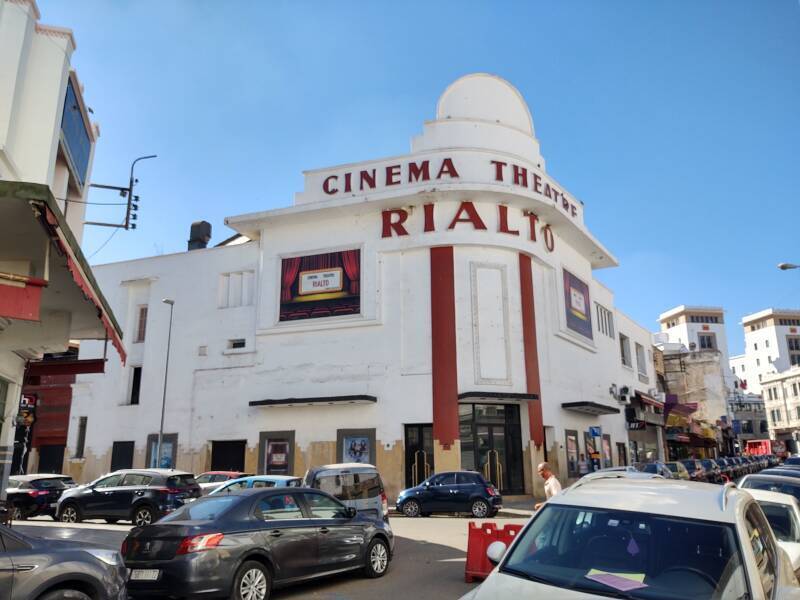
Most of the buildings along Boulevard Mohammed V, especially those west of the Marché Centrale or Central Market, have elements of Art Deco design.
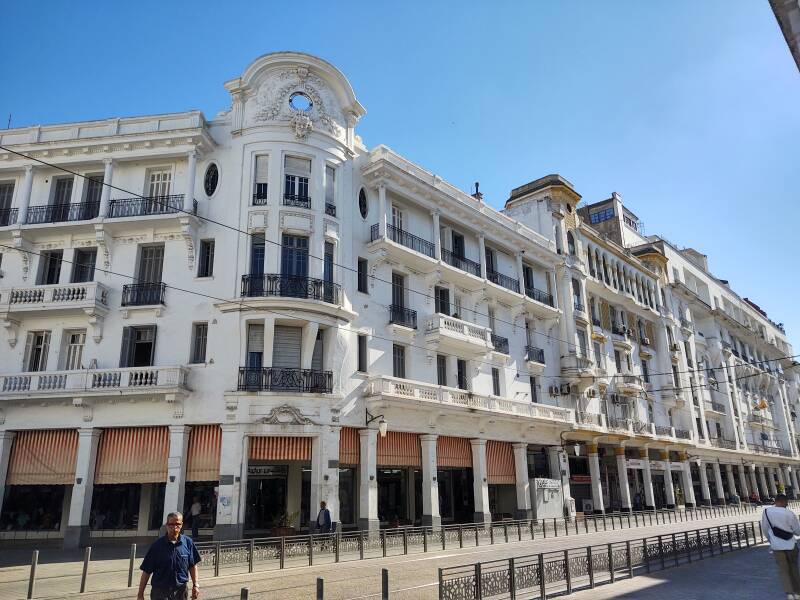
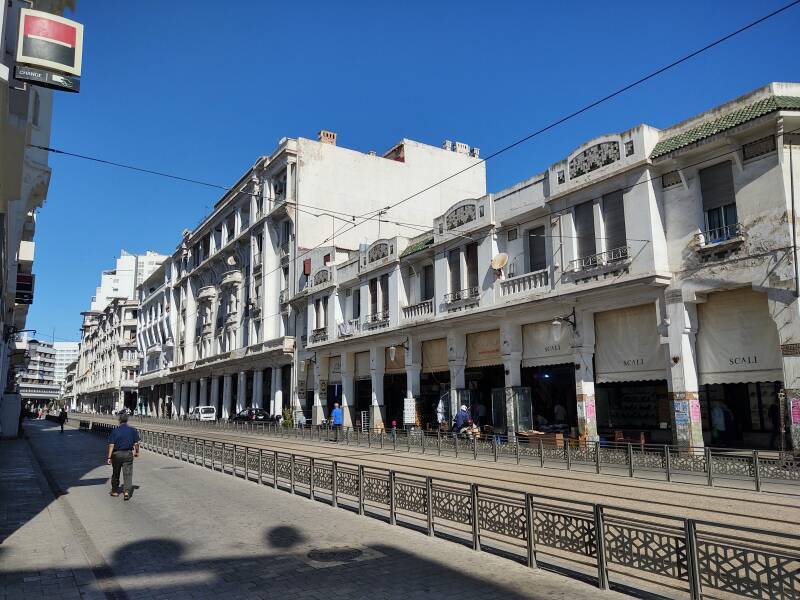
Here I'm in the area along Avenue Moulay Hassan I, running west-southwest from Place Nations Unies. Many of the old buildings need some work, but they still have that modern-in-the-past 1920s design.

Many buildings have a central courtyard.
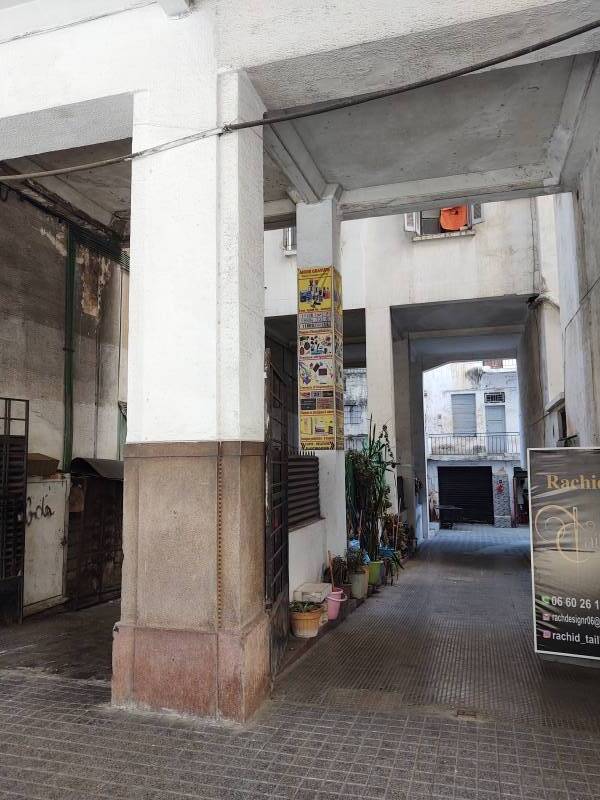

The Cathédrale du Sacré Coeur was designed and built in 1930. Many Europeans lived in Morocco during the Protectorate, and the cathedral was busy. Most of the Europeans left after independence in 1956, and the cathedral has been decommissioned. It's used for art exhibits and youth activities.
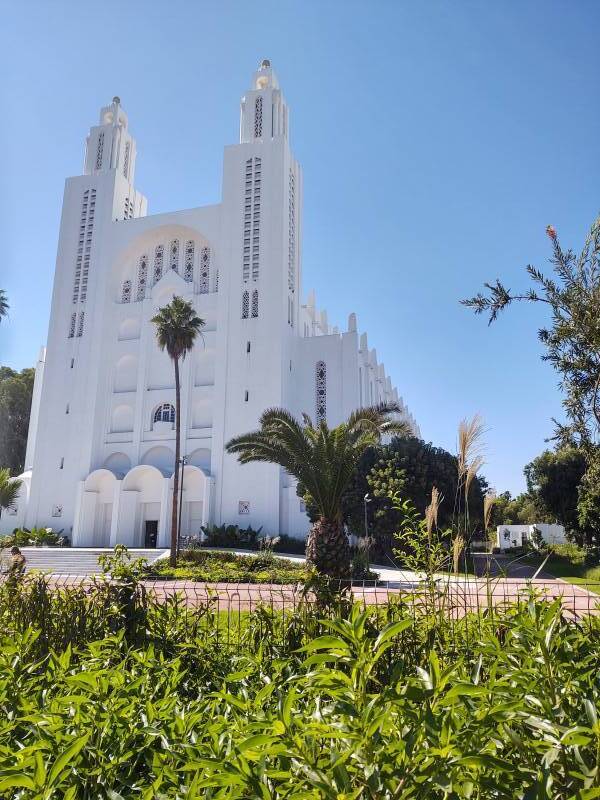
Morocco was a very multi-cultural and multi-faith country. In some cities a quarter of the population was Christian and another quarter was Jewish. Morocco's large Jewish population built up from individuals fleeing persecution in Spain starting from the time of the Inquisition. The medina or old section of most Moroccan cities includes a sizeable mellah or Jewish section.
Sultan Mohammed V was highly esteemed by the Moroccan Jews for protecting them from the Vichy regime, and thus from Nazi Germany.
Vichy officials directed him to sign two degrees that barred Jews from certain schools and positions. However, he refused to impose further anti-Jewish laws and blocked sending Morocco's Jews to Nazi Germany's concentration camps and extermination camps in Europe.
The Parc de la Ligue Arabe is quite large. Here I'm looking back toward the cathedral from a large plaza on its eastern edge along Avenue Hassan II.
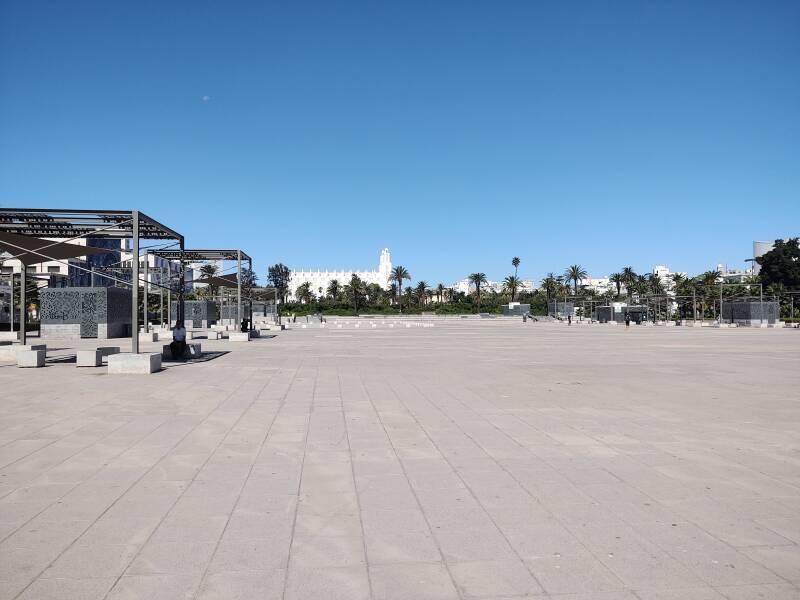
Just north of there is Place Mohammed V, a large square with fountains surrounded by government buildings.
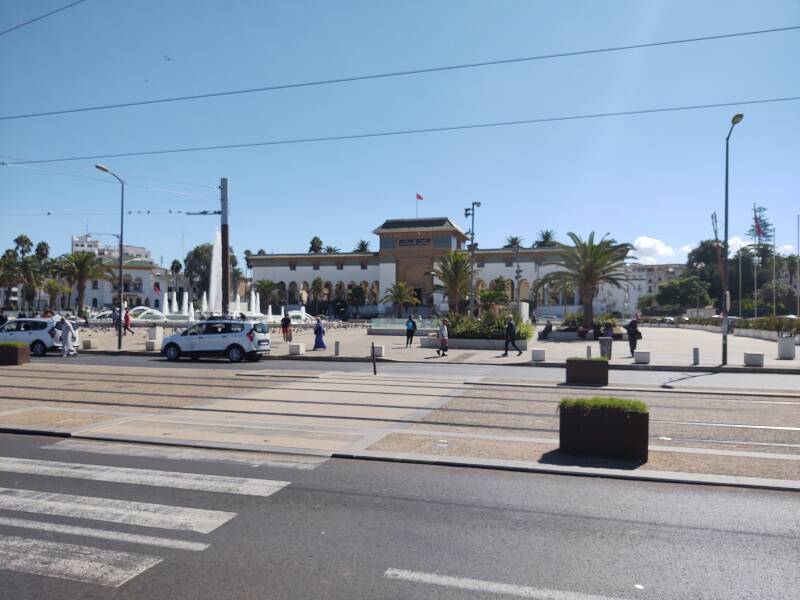
The guy in the conical hat is a water vendor, eager to have his picture taken in return for baksheesh. There will be many more of those in Marrakech.

This more modernist design was built in 1930 as the police headquarters. Now it's the Wilaya de la Region Casablanca. A Vilayet was a province in the later Ottoman Empire. So, this is the Casablanca regional administration building.
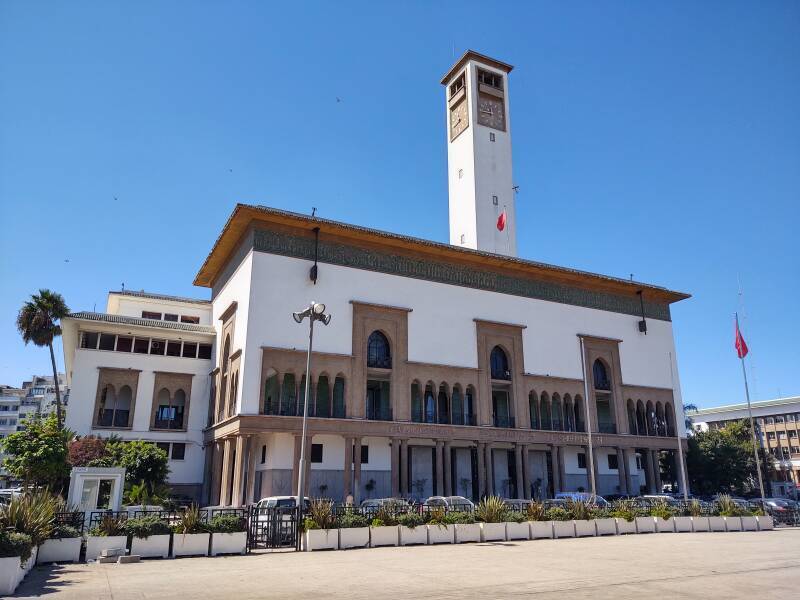
The Palais du Justice was built in 1925. Its design is based on the Persian iwan, a vaulted hall housing a medersa or theological school associated with a mosque.
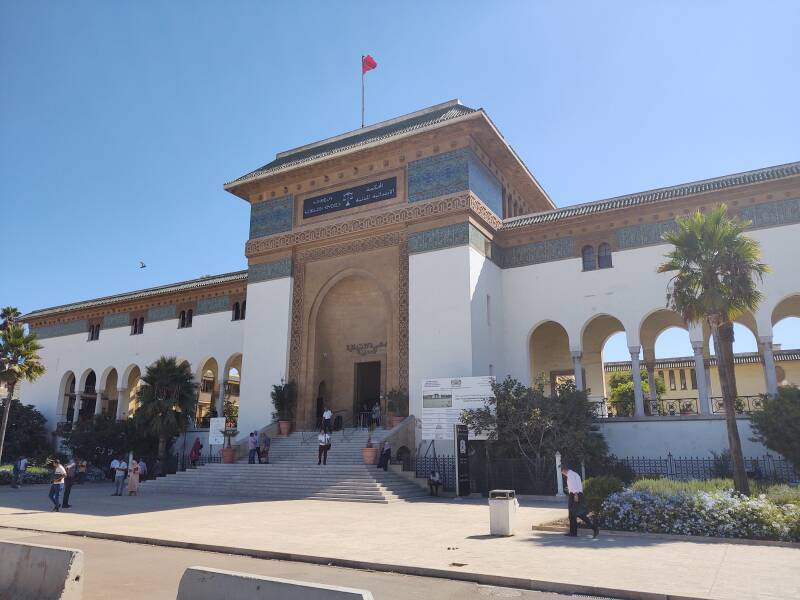
The Place d'Armes is a military building on the northeast corner. That looks like a folded dipole for about 6–7 MHz.
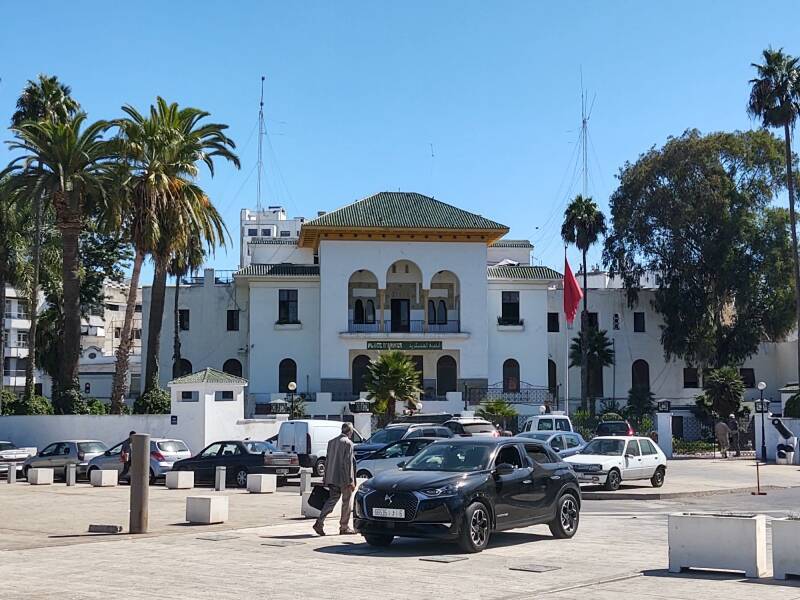
The main post office is a little older. It was built in 1918.
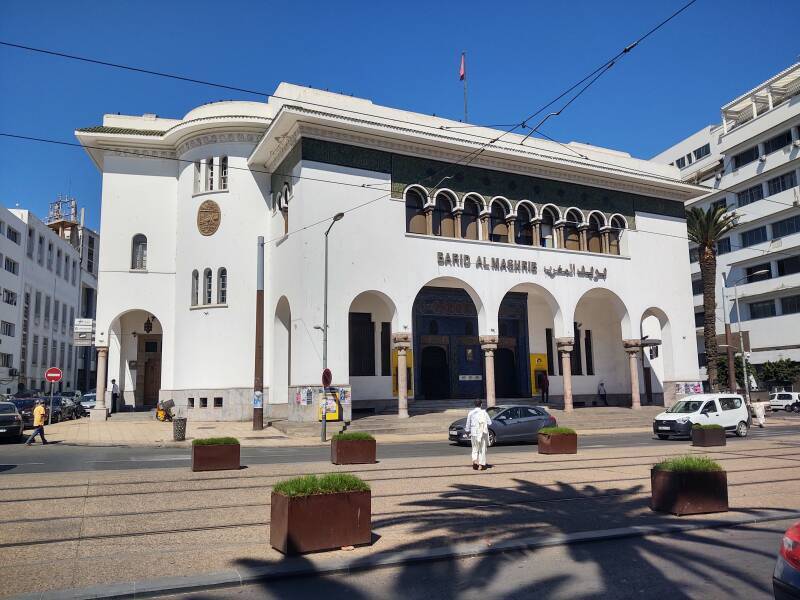
The Bank al-Maghrib is in a more traditional Moroccan style. It was the last major building added around Place Mohammed V. Maghreb or Maghrib is the term for North Africa west of Egypt — Libya, Tunesia, Algeria, Morocco, and Mauritania.
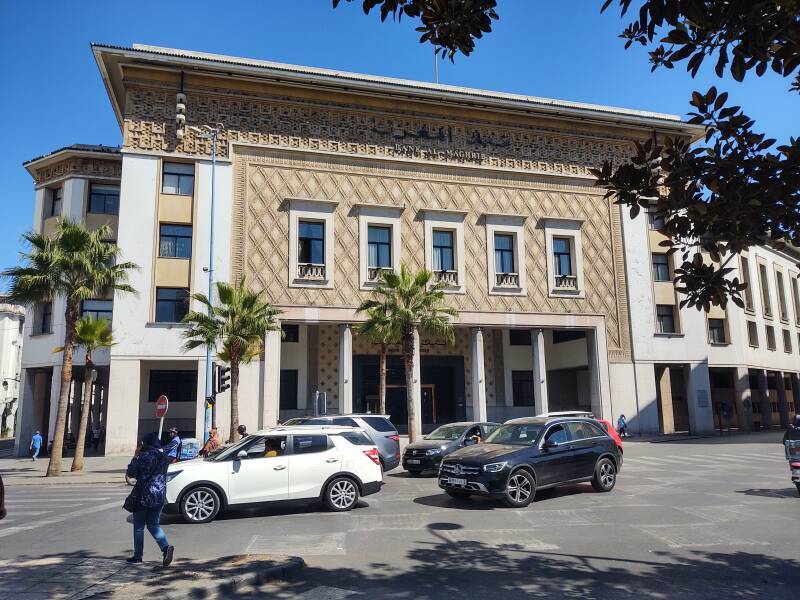
Continuing northeast along Rue Indriss Lahrizi, I'm again walking through a covered walkway formed by the street side of the buildings. These are filled with small businesses and café seating and are like the στοά or stoa of ancient Greece.

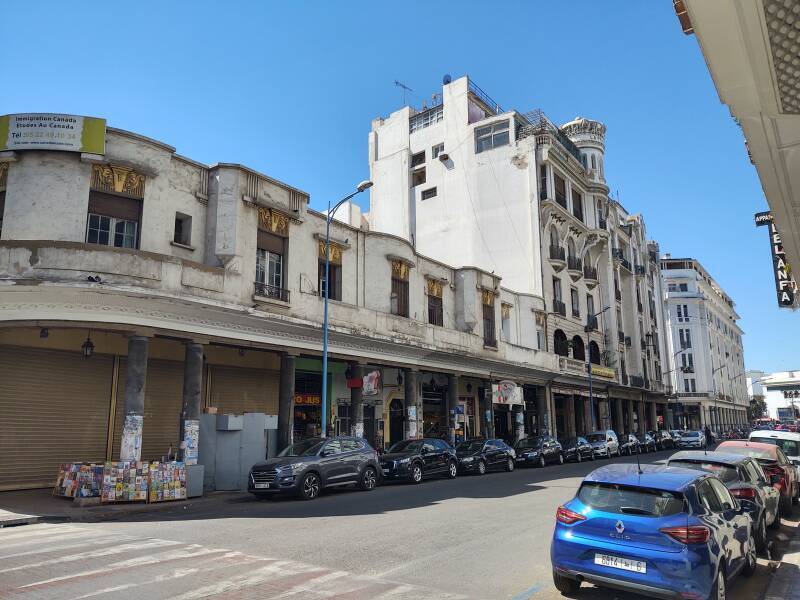
La Princière Salon de Thé dates from the Art Deco area, and a café is still operating here.
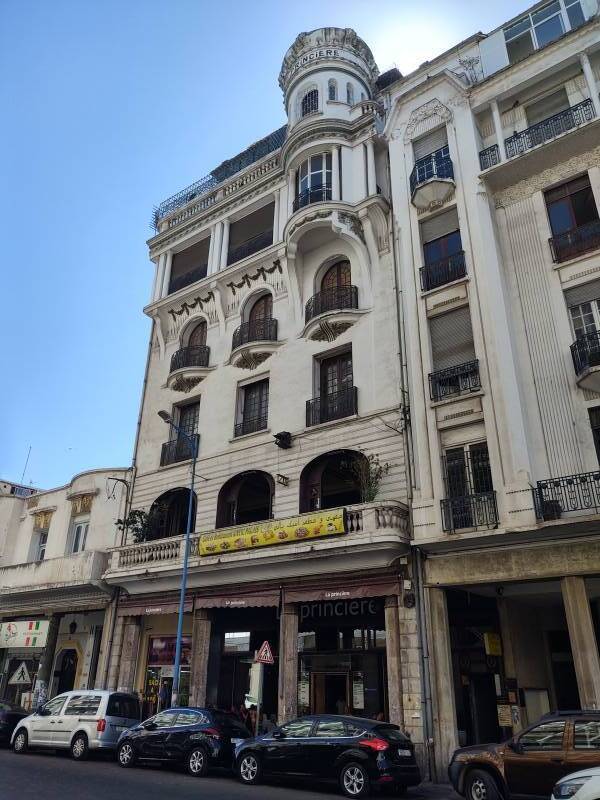
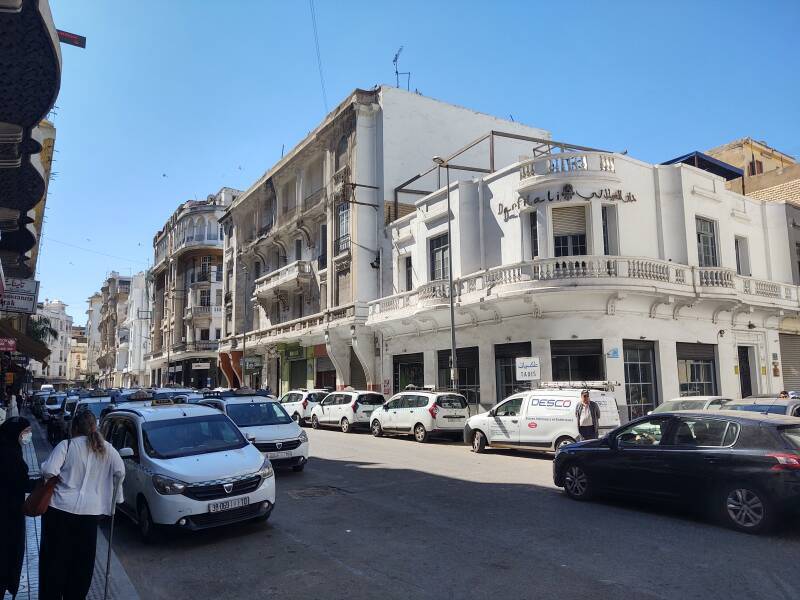
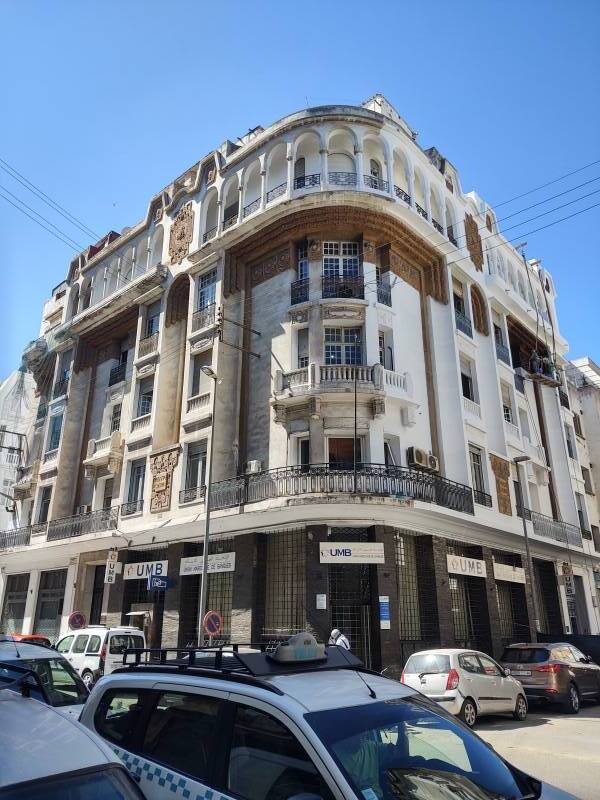
This is along Rue Indriss Lahrizi.
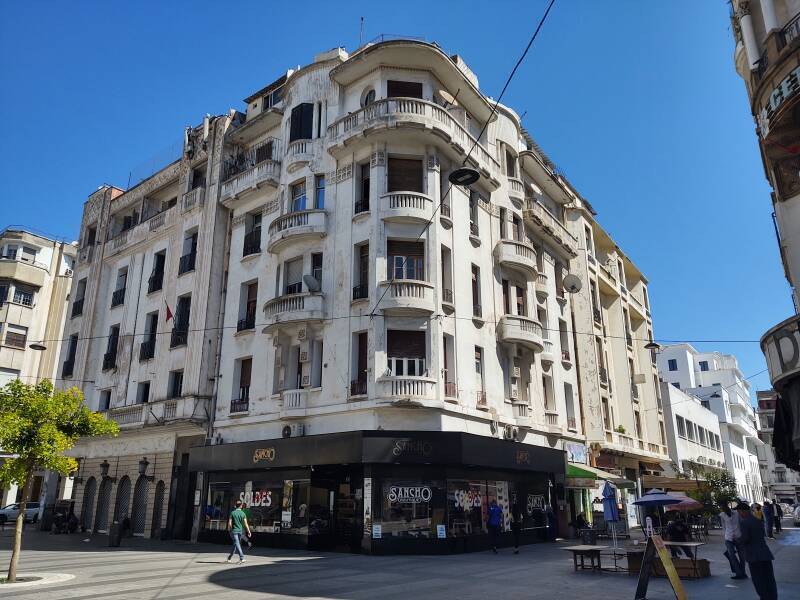
The Hôtel Guynemer still has its original Art Deco panels.


Here's the entry of a hotel on Rue Mohammed Belloul.
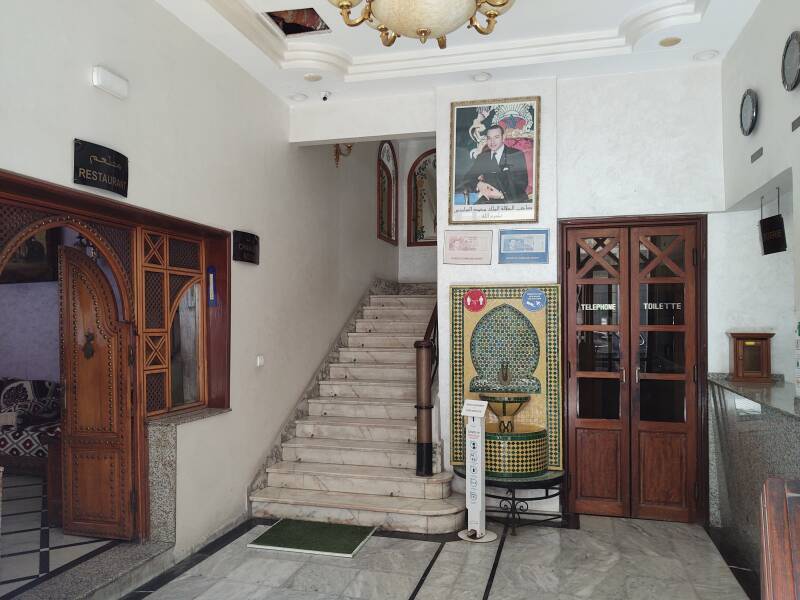
This complex façade is on Rue Tahar Sebti.
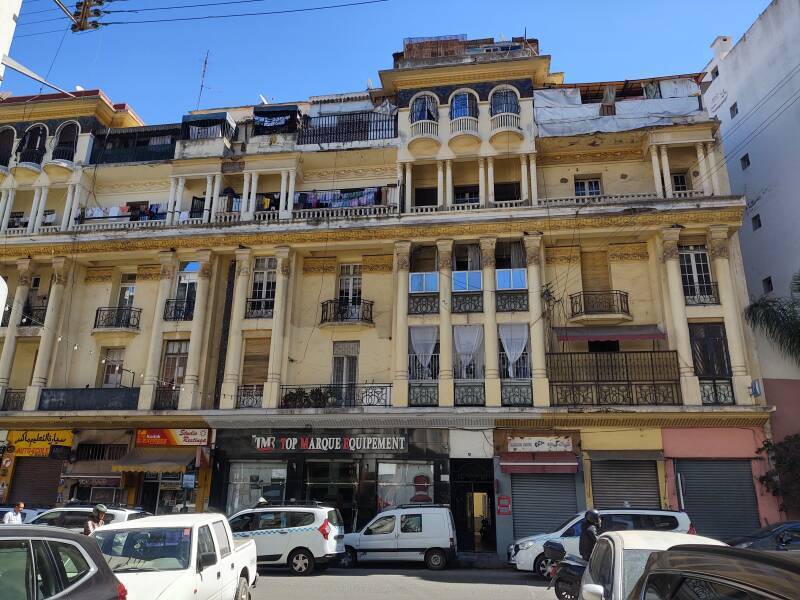
The Bank of Africa has a branch at the sharp corner of Rue Tahar Sebti and Rue Chaouia.
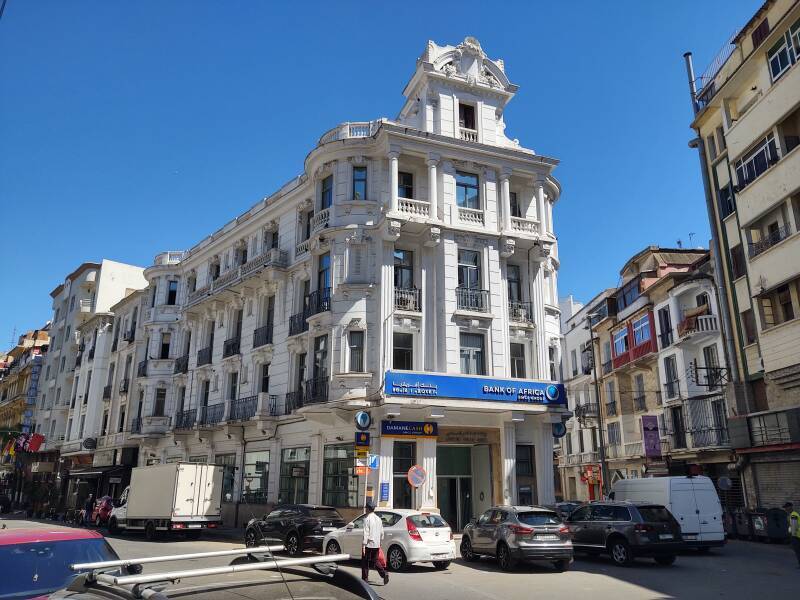
The Café al-Khayma is across from the Bank of Africa.
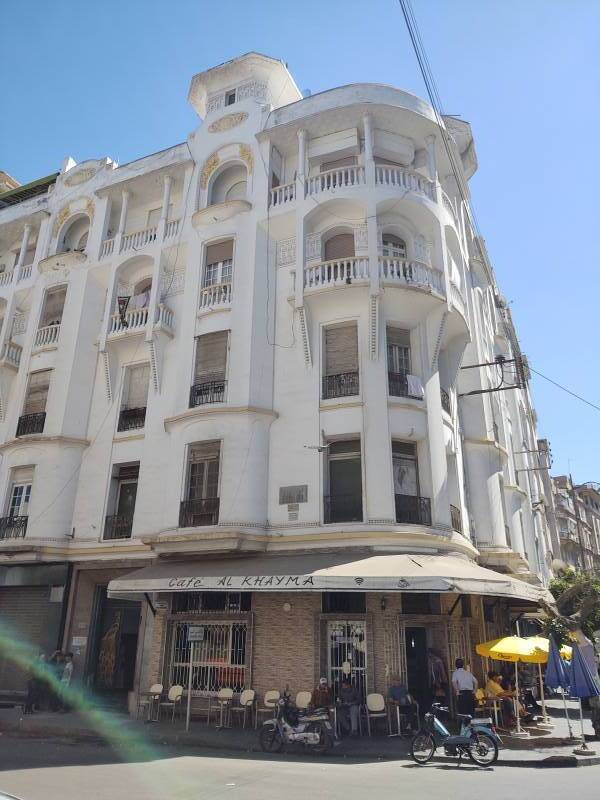
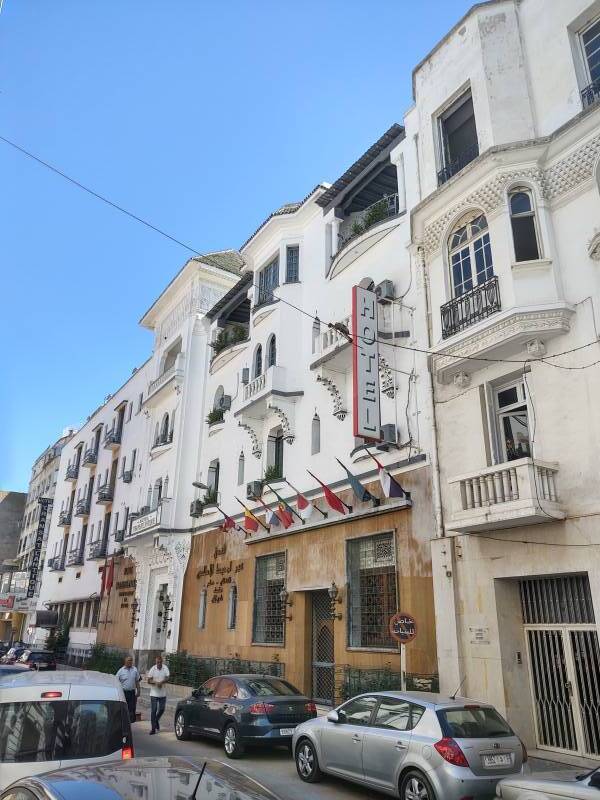
The Hôtel Transatlantique seen above and below has been on Rue Chaouia for a long time.

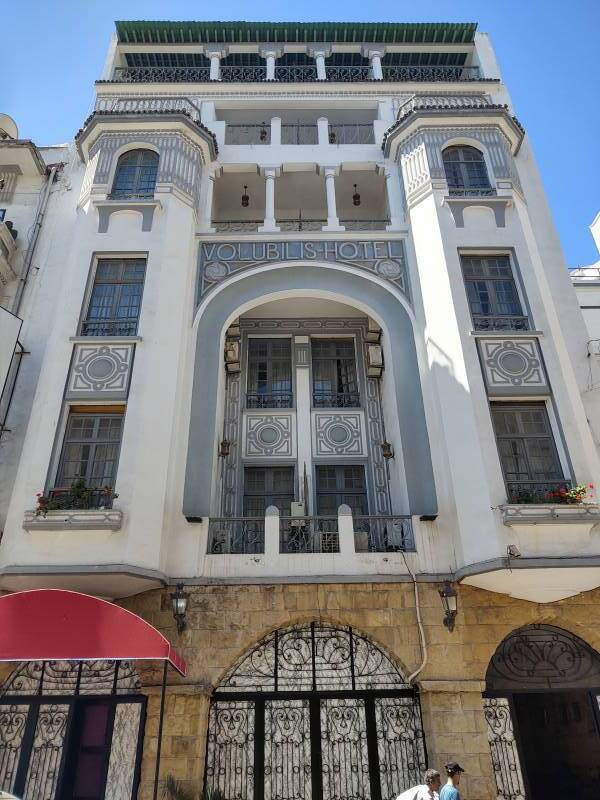
Hôtel Volubilis on Rue Abdel Karim Diouri has a famous Art Deco façade.
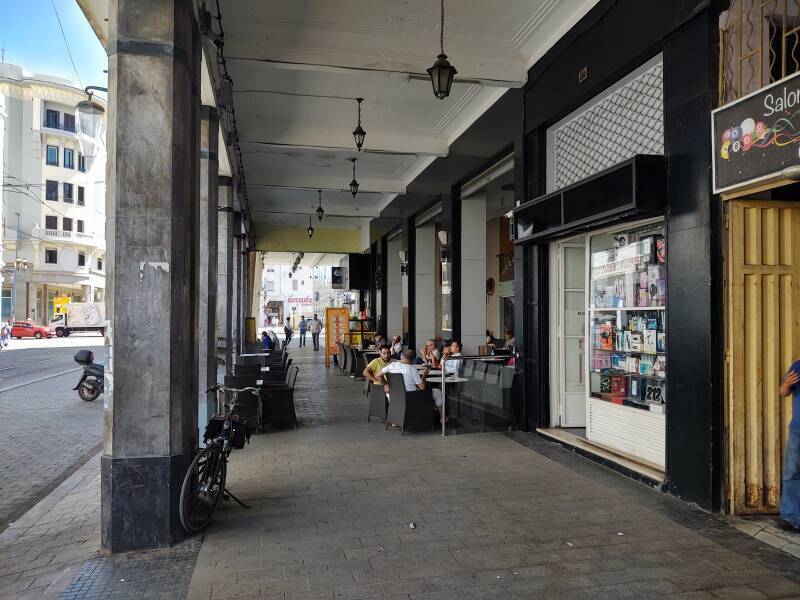
Now I'm back on Boulevard Mohammed V heading back toward my hotel.
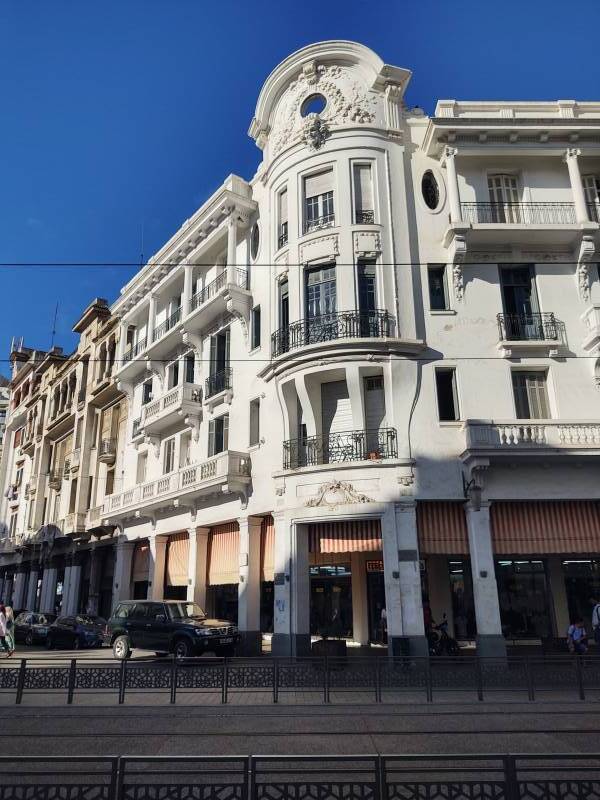
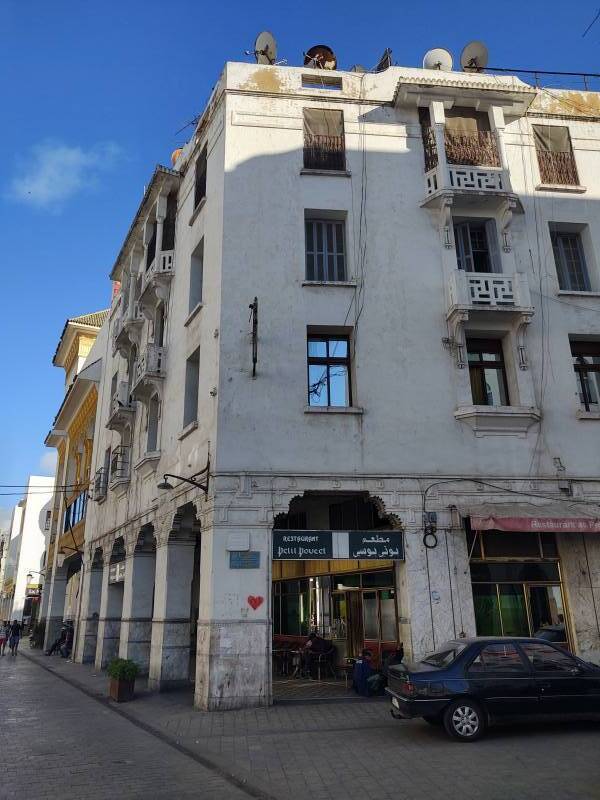
The Petit Poucet bar and café seen above was once frequented by Antoine de Saint-Exupéry, author of Le Petit Prince, author Albert Camus, and singer Édith Piaf. Saint-Exupéry disappeared on a reconnassance mission over the Mediterranean in July 1944, the wreckage of his plane was discovered in 2000.
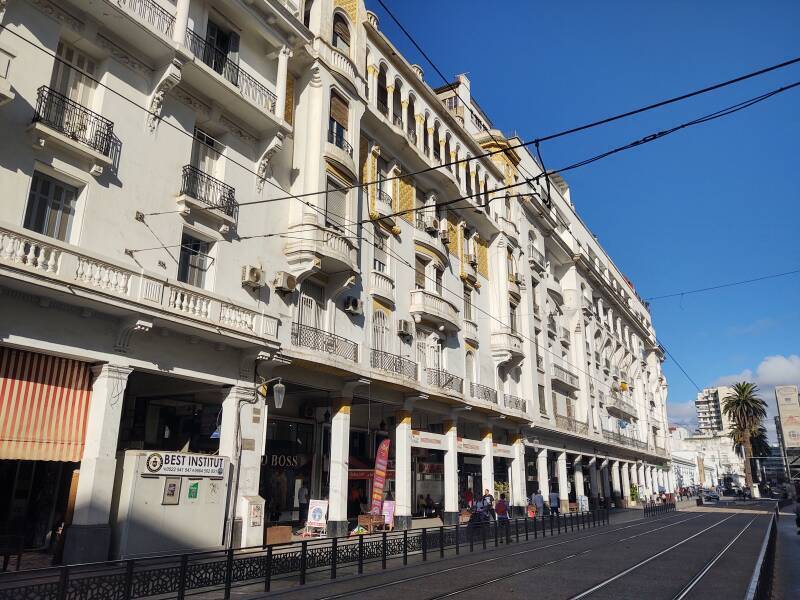
The Chamber of Commerce of Industry and Services has an elaborately decorated building.
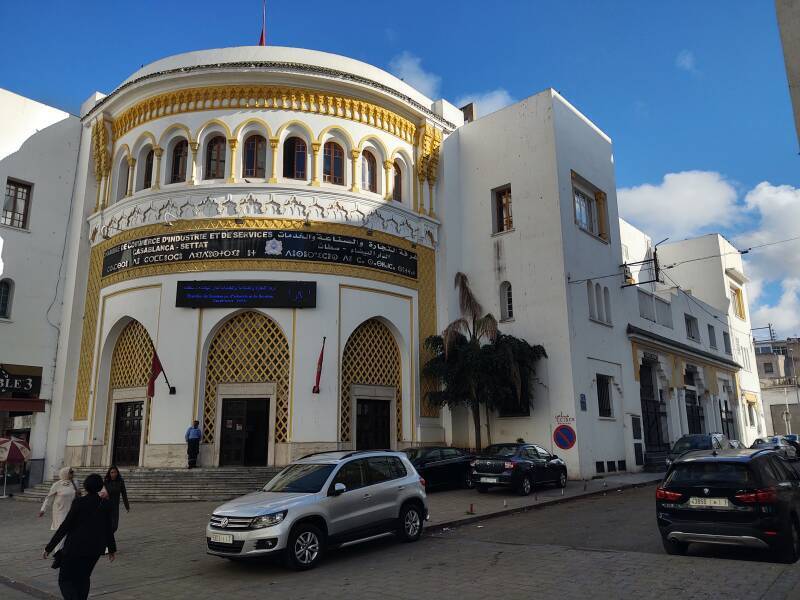
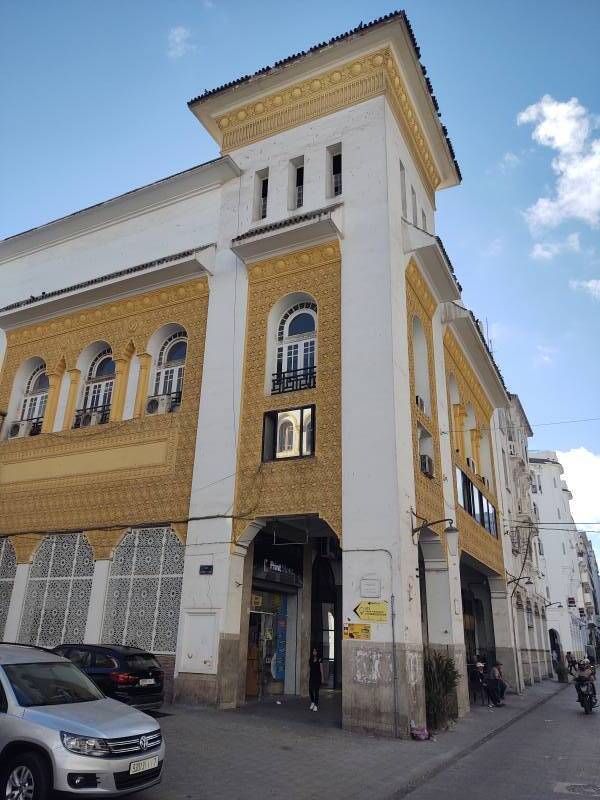

I returned to my hotel at the end of a long day. My balcony was next to the "...SE" at the bottom of the sign.
I got the fixed-menu dinner at the mezzanine restaurant. It started with lentil soup.
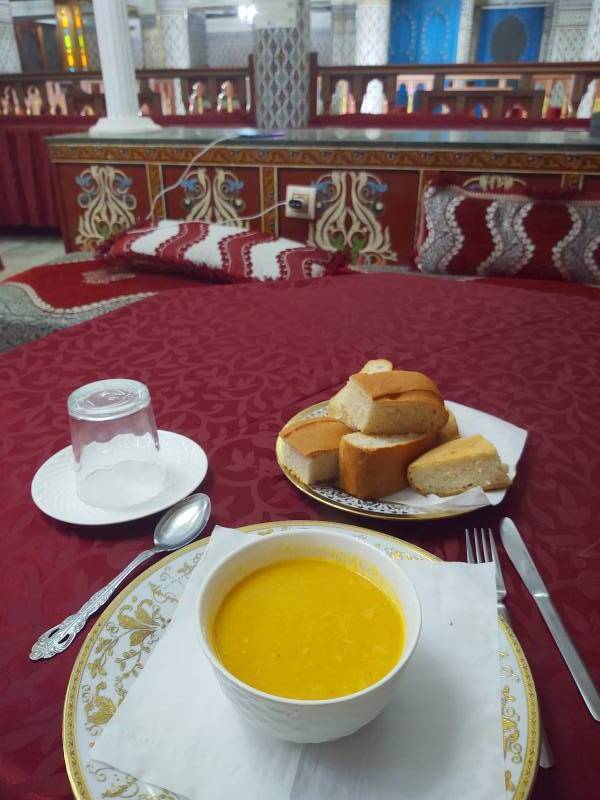
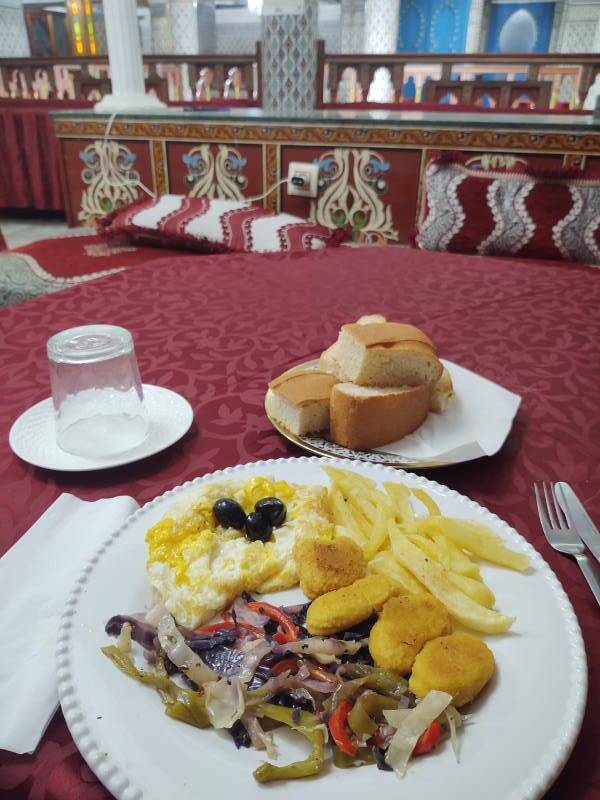
The main dish was a cheese omelette, fried peppers and cabbage, fried chicken, and french-fried potatoes. Dessert was melon and pomegranate.
